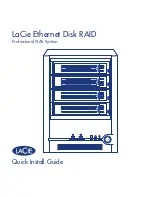
Sirius 800 Series User Manual
Audio Reference Input
Product Overview 3.12
Iss 5 Rev 7
Page 46
© 2017 SAM
3.11.5 Manual Reference Standard Selected
When a reference standard, such as Ref720p60, is selected manually the Nucleus controller
will look for a derived reference (2464 or 2463) or a physical reference (2450) that exactly
matches the selected standard.
•
If the selected standard reference signal (physical or derived) is present then the
controller will switch in accordance with SMPTE RP168.
•
If the selected standard reference signal (physical or derived) is not present the router
will crash switch.
•
If the selected standard reference signal (physical or derived) is present but different
to the actual signal being switched, for example Ref1080i50 for a 1080p50 signal,
then the timing must be adjusted to make sure the switch happens at the correct
point.
3.11.6 Reference Input (Physical or Derived) Selected
When a reference input is selected manually (a physical or derived reference) the Nucleus
controller will use the specified reference input.
•
If the signal on the specified reference input (physical or derived) exactly matches the
signal to be switched then the router will switch in accordance with SMPTE RP168.
•
If the signal on the specified reference input (physical or derived) does not exactly
match the signal being switched the router will switch according to the specified
reference. The timing must be adjusted to make sure the switch happens at the
correct point.
•
If the signal on the specified reference input (physical or derived) is not valid the
router will crash switch.
3.12 Audio Reference Input
The Sirius 800 routers have two AES (48 kHz only) audio reference inputs on the rear of the
router (see section 16.2 for connection details):
•
1 x BNC unbalanced AES input, 75
termination.
•
1 x 9-Way D Type balanced AES input, 110
termination.
A controller can be configured to distribute an AES reference around the router so that the
audio output modules can lock to it. The AES reference generated is either a free-running
clock set to an AES clock rate of 48 kHz, or it can be locked to a physical input reference on
the router (either the AES reference, or one of the video references).
The audio reference is configured in Workbench from:
Controller Configuration
,
Local
Router Hardware
,
Advanced Configuration
,
Edit Derived References....
See the Workbench user manual for full setting details.
These values are part of the database configuration so will need to be pushed to the controller
along with the rest of the configuration data.
Note:
Derived references are only available when Nucleus2 controllers are fitted.
see section 3.11.1 for details.
Note:
Derived references are only available when Nucleus2 controllers are fitted.
see section 3.11.1 for details.
Important:
Only one audio reference (balanced or unbalanced) should be connected to the router.
Connecting both audio references will stop the audio routing from functioning correctly.
















































